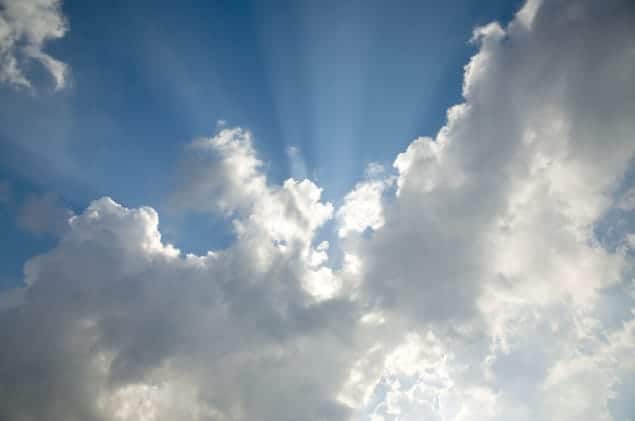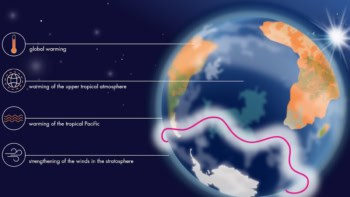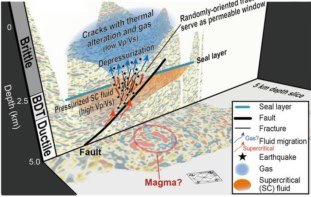Earth: the Operator's Manual
Richard Alley
2011 W W Norton £19.99/$27.95hb 479pp

A few decades ago, concerns about climate change focused on the “nuclear winter” scenario that scientists feared would result from a full-scale exchange of nuclear weapons. Now that this has, thankfully, become less likely, physical scientists (and others) have turned their attention to a less dramatic but still important aspect of climate change: the extent to which rising global temperatures are natural, or induced by increases in CO2 and other gases in the atmosphere.
What a difficult area. As someone who has worked on a variety of topics in particle physics and astrophysics, I well know that these are easier subjects to study, and their ramifications are less important (at least at present) than the behaviour of the atmosphere. Moreover, insofar as everyone is “affected by the weather”, most of us have opinions on what is going to happen to the climate in the future, and on whether we can (or should) modify it. The difficulty of the subject plus its widespread relevance has led to a polarization of opinion and great contention. In this respect, I am reminded of the “Big Bang versus continuous creation” arguments in cosmology half a century ago – except that the present subject is far, far more important.
We all agree that the climate is changing, and nearly everyone will concede that it is getting warmer. However, there remains a dichotomy of beliefs among members of the public as to whether this is a natural or man-made phenomenon, despite the great efforts of the Intergovernmental Panel on Climate Change (IPCC) to convince us of the latter. There are even a few eminent scientists, physicists included, who still “know” – I repeat, “know” – that the warming is natural. These scientists have not worked in the field themselves, nor have they read the literature in a comprehensive way, but they know the answer nevertheless. Remarkable!
So there is clearly education yet to be done, even in the scientific community, and a number of publications have attempted to address this need. The “bibles” in the field are the IPCC’s own famous reports, which summarize the research results of many climatologists and related scientists, most of whom have impressive pedigrees. My own view is that, apart from some rather muddled thinking over the question of probabilities – always a thorny issue – they are very good. However, they are inevitably rather technical, and this is where books such as Richard Alley’s Earth: the Operator’s Manual come in.
Alley’s book is the companion to a TV documentary that was broadcast in 2011 on US public television. He is a recognized world leader in the science of global warming, being a professor of geosciences at Pennsylvania State University and a member of the US National Academy of Sciences (NAS). Thus, he should know what he is writing about. Nevertheless, having ploughed through Earth, my first reaction was that it is a good example of how to cram 100 pages of information into an almost-500-page book.
This is perhaps not entirely fair, because the multitude of by-ways along which we pass are undoubtedly interesting. Almost every aspect of climate change is covered, from the fact that we are burning fossil fuels at a rate some million times higher than the rate at which nature saved them, through the intricacies of climate models, to the dire consequences of “doing nothing”. The pluses and minuses of possible techniques for alleviating warming are also well thought out; Alley covers carbon sequestration along with several renewable-energy sources, not forgetting nuclear power. He does baulk at making a specific recommendation, offering instead the standard “more research is needed” formula. He is probably right to do so.
Yet despite the book’s comprehensive coverage of all the facets of climate change, I must say that Alley’s descriptions of such incidental topics as the activities of the NAS and the manifold characteristics of Cape Cod, Massachusetts – not to mention the problem of disposing of human waste in 1750s Edinburgh – gets a bit wearing. No doubt the last two were put in to encourage TV viewers seeking some sort of “human angle”. Perhaps we should be grateful that the carbon footprint of Alley is smaller than those of some British TV scientist-personalities, who seem to need to demonstrate simple physics from the tops of mountains, or simple biology from distant jungles.
Alongside these unnecessary additions, the book has, in my opinion, one big omission: population growth. Alley gears his discussion about our future power needs to a projected population of 10 billion, but surely efforts to limit population growth are just as important – if not more so – as those to stem global warming per se. Indeed, the two are related. If a fraction of the effort that is currently being put into reducing global warming were instead applied to techniques for reducing human fertility (in a humane way), it would surely increase the sum total of human happiness.
Returning to the book, mention must be made of its illustrations. Most are interesting and relevant, but there are a few, such as “Dangers of the whale fishery” and “Greenland’s musk oxen”, that seem not to add much to the topic under study. The biggest disappointment with the illustrations, though, is their dull sepia tone. Surely colour could have been afforded? As to readership, this will be a good coffee-table book for many, particularly those who enjoyed the TV documentary. However, I think that most physicists would prefer a slimmed-down version containing the important messages that Alley, as an expert geoscientist, has to offer. A “Noddy” version for the doubters would be useful, too.



